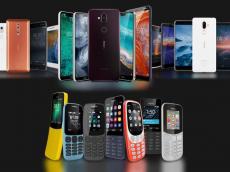|
|
TODAY.AZ / World news
Touch screens started to lose popularity - users prefer push-button gadgets
21 October 2024 [20:21] - TODAY.AZ

By Alimat Aliyeva
Push-button devices can displace touchscreens, which are no longer as popular as they used to be. Experts say that touchscreens have begun to lose popularity in the world, as users prefer push-button gadgets, Azernews reports.
This phenomenon has been called re-buttonization (return to buttons). This trend affects not only smartphones, as touch buttons complicate the process of using various equipment. For example, the driver of a modern car sometimes needs more time and actions with a touch screen to launch a certain function, when it used to be responsible for one physical button.
As a first example, the WSJ edition cites the appearance of a new Camera Control button to control the camera in the iPhone 16. The device also has a customizable touch Action Button, which was already available on the iPhone 15 Pro. "As Apple's experience shows, companies are not just rediscovering buttons, they are rethinking them," profile experts told the media.
Touch control panels in Tesla electric vehicles are starting to seem outdated against the background of buttons, knobs and switches in new Kia, Mini BMW and Volkswagen models, according to the WSJ.
"To ensure that drivers never have to take their eyes off the road, Mini designers have implemented a customizable display in their cars that drivers can control using buttons and a scroll wheel on the steering wheel," Patrick McKenna, head of product and marketing at Mini USA, told the media.
The journalists recalled that now more and more devices are being produced with buttons, for example, handles on induction stoves that allow you to understand the heating level of the burners, buttons for turning pages in Kobo, Nook and Boox e-books, as well as a handle on the side of the Playdate portable game console. Users choose such gadgets because it is clear and convenient for them to work with buttons, toggle switches or wheels, rather than digging into the touch screen settings to access a simple option.
Earlier, Volkswagen decided to return physical buttons to new cars after customer complaints. This happened after the automaker abandoned physical buttons in favor of a touchscreen with controls.
URL: http://www.today.az/news/regions/254238.html
 Print version
Print version
Connect with us. Get latest news and updates.
See Also
- 15 November 2024 [23:30]
United States deploys naval reconnaissance aircraft in Scotland - 15 November 2024 [22:27]
Schumacher's latest car is up for auction - 15 November 2024 [21:46]
Tbilisi City Hall allocated 8.6 million lari for New Year's events - 15 November 2024 [20:48]
Iran prepares to treat women who violate hijab law - 14 November 2024 [23:45]
Minister Bayraktar emphasizes Turkiye's role in net zero emissions - 14 November 2024 [23:26]
Poland deployed South Korean K2 tanks near border with Russia - 14 November 2024 [22:50]
Pentagon spent $1 billion on the US military industry - 14 November 2024 [21:40]
US budget deficit quadrupled in year - 14 November 2024 [20:19]
Impressive warehouse discovered in Turkiye - 14 November 2024 [18:48]
Armed robot dog 'BARS' shows off in sniper competition
Most Popular
 Provocateur Le Pen go to jail
Provocateur Le Pen go to jail
 Azerbaijan's Leadership at COP29: Addressing Global Climate Challenges and Exposing Hypocrisy
Azerbaijan's Leadership at COP29: Addressing Global Climate Challenges and Exposing Hypocrisy
 Macron Stung by President Ilham Aliyev's Truth: French Minister Ordered to Skip Baku Visit
Macron Stung by President Ilham Aliyev's Truth: French Minister Ordered to Skip Baku Visit
 Who uses Greta Thunberg and how?
Who uses Greta Thunberg and how?
 Climate Platform for business, investment & philanthropy launched within COP29
Climate Platform for business, investment & philanthropy launched within COP29
 United States announced plans to deepen security cooperation with Indonesia
United States announced plans to deepen security cooperation with Indonesia
 Azerbaijan’s COP29 presidency sets precedent with focus on amplifying voices of vulnerable nations
Azerbaijan’s COP29 presidency sets precedent with focus on amplifying voices of vulnerable nations
